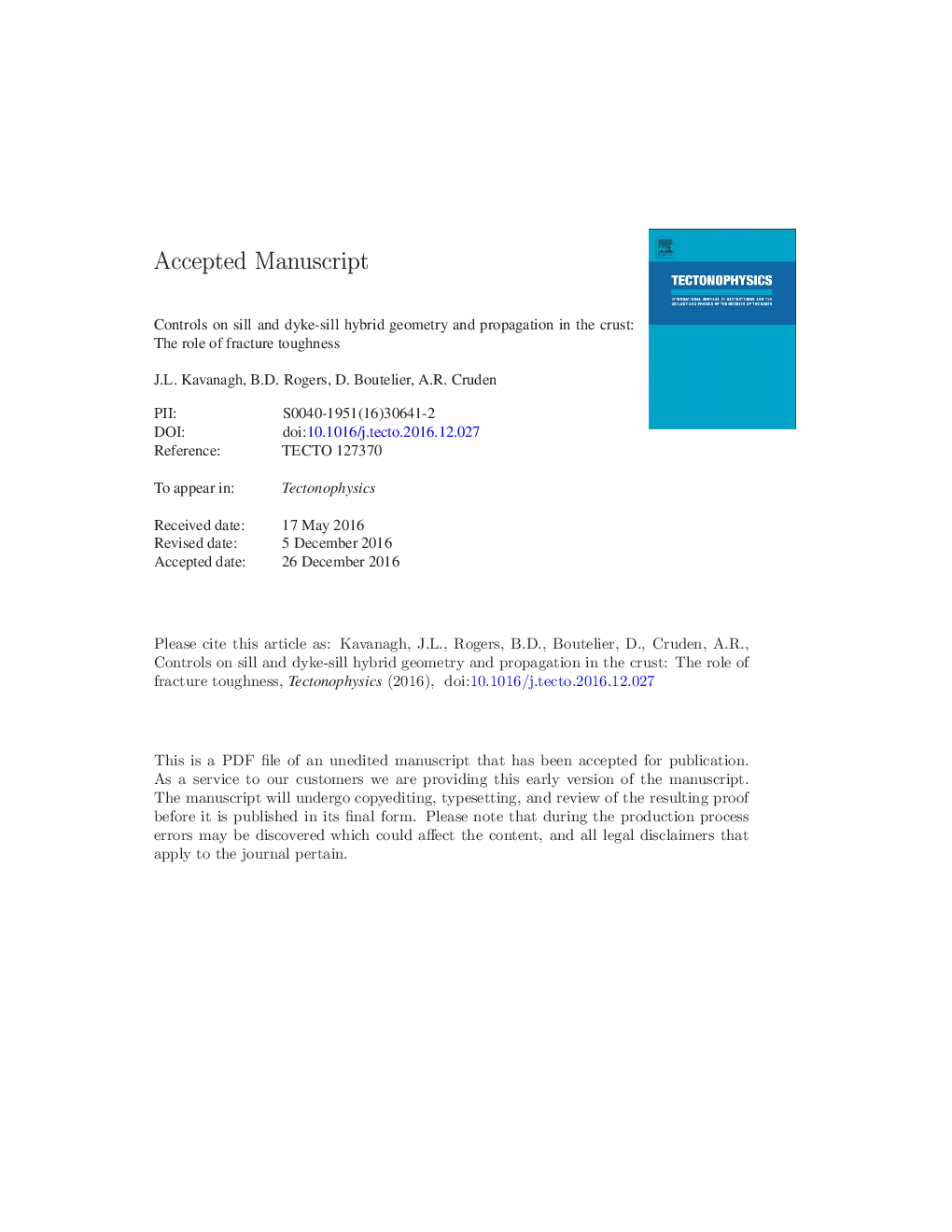| کد مقاله | کد نشریه | سال انتشار | مقاله انگلیسی | نسخه تمام متن |
|---|---|---|---|---|
| 5781692 | 1636704 | 2017 | 47 صفحه PDF | دانلود رایگان |
عنوان انگلیسی مقاله ISI
Controls on sill and dyke-sill hybrid geometry and propagation in the crust: The role of fracture toughness
ترجمه فارسی عنوان
کنترل هندسه هیبرید و جاذب در زیر پوسته زیرزمینی و پایداری: نقش چقرمگی شکست
دانلود مقاله + سفارش ترجمه
دانلود مقاله ISI انگلیسی
رایگان برای ایرانیان
کلمات کلیدی
موضوعات مرتبط
مهندسی و علوم پایه
علوم زمین و سیارات
فرآیندهای سطح زمین
چکیده انگلیسی
Analogue experiments using gelatine were carried out to investigate the role of the mechanical properties of rock layers and their bonded interfaces on the formation and propagation of magma-filled fractures in the crust. Water was injected at controlled flux through the base of a clear-Perspex tank into superposed and variably bonded layers of solidified gelatine. Experimental dykes and sills were formed, as well as dyke-sill hybrid structures where the ascending dyke crosses the interface between layers but also intrudes it to form a sill. Stress evolution in the gelatine was visualised using polarised light as the intrusions grew, and its evolving strain was measured using digital image correlation (DIC). During the formation of dyke-sill hybrids there are notable decreases in stress and strain near the dyke as sills form, which is attributed to a pressure decrease within the intrusive network. Additional fluid is extracted from the open dykes to help grow the sills, causing the dyke protrusion in the overlying layer to be almost completely drained. Scaling laws and the geometry of the propagating sill suggest sill growth into the interface was toughness-dominated rather than viscosity-dominated. We define KIc* as the fracture toughness of the interface between layers relative to the lower gelatine layer KIcInt / KIcG. Our results show that KIc* influences the type of intrusion formed (dyke, sill or hybrid), and the magnitude of KIcInt impacted the growth rate of the sills. KIcInt was determined during setup of the experiment by controlling the temperature of the upper layer Tm when it was poured into place, with Tm < 24 °C resulting in an interface with relatively low fracture toughness that is favourable for sill or dyke-sill hybrid formation. The experiments help to explain the dominance of dykes and sills in the rock record, compared to intermediate hybrid structures.
ناشر
Database: Elsevier - ScienceDirect (ساینس دایرکت)
Journal: Tectonophysics - Volume 698, 15 February 2017, Pages 109-120
Journal: Tectonophysics - Volume 698, 15 February 2017, Pages 109-120
نویسندگان
J.L. Kavanagh, B.D. Rogers, D. Boutelier, A.R. Cruden,
